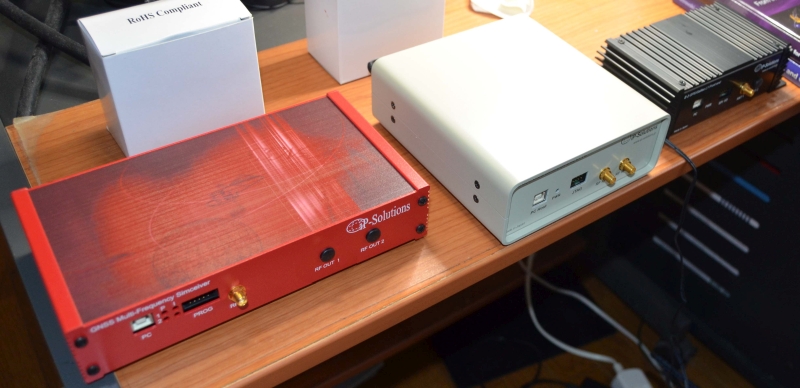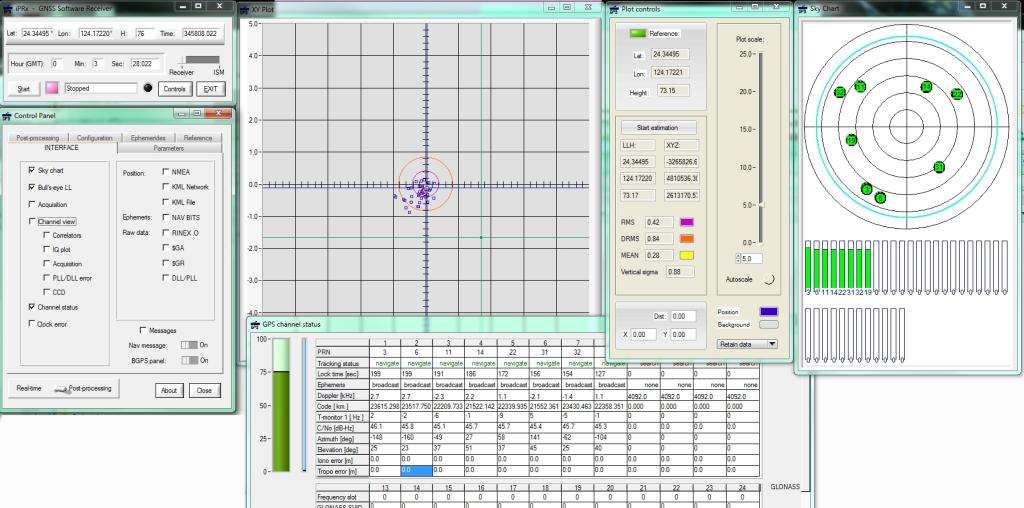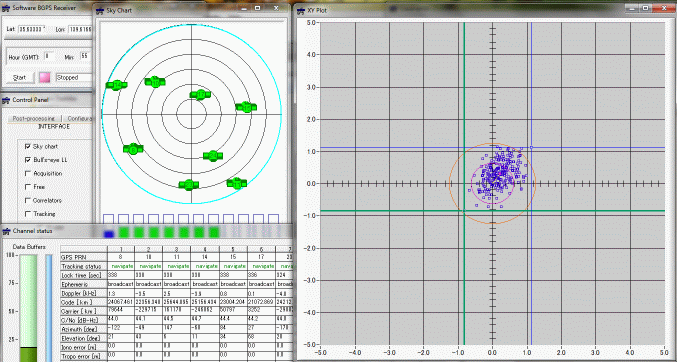
ARAMIS software GNSS receiver has been developed for and in cooperation with JAXA. It is implemented for monitoring of ionospheric scintillations,
including airborne applications using tightly coupled INS/GNSS. R&D version is intended for research and academic applications.
It is cut-price version of ARAMIS ISM and
it doesn't include some functions related to tight integration with INS and functions for signal analysis and scintillation monitoring.

... Any of our front ends can be used with ARAMIS receiver:
Eagle - budget GPS/Galileo/GLONASS/BeiDou Dual front end with TCXO
- Work in real-time with live satellites or with recorded/simulated signal
- Visual interface with GNSS signal, signal processing, and receiver technology.
- Output: NMEA, RINEX, Google Earth KML, binary Navigation message, raw acquisition and tracking data
- GPS, GLONASS, Galileo single and multi-frequency signals.
- High quality code and carrier phase observables .
- Positioning accuracy up to 1 meter, centimeters ( with free RTKLIB ).
- Coherent tracking with up to 1 second integration time.
- Implementation of user defined processing algorithms and methods through API.
-Tunable tracking loops.
-Tight integration with INS.
- Special functions for signal analysis and scintillation monitoring.
- API
Academic version
It comes free with our book from Cambridge University Press book published by Cambridge University Press
Professional version
* Advanced control over receiver settings
* Access to navigation message contents, various options to output position and raw data, such as NMEA, RINEX, Google Earth formats, tracking data.
* Choice of DLL and PLL types, tracking and acquisition parameters, number of correlators
Development version
The development version includes access to various parts of the software and firmware through application programming interface (API) source code
Front end API
Allows access to front end
Baseband API
Allows access to tracking loops
Navigation API API
Allows access to navigation processor
Depending on front end and version, supported signals are: GPS L1, GLONASS L1, L2, BeiDou B1,B2, Galileo E1
* Accuracy: ~1m RMS stand-alone, real-time.
* Clock. TCXO: 0.5 ppm (Eagle front end). OCXO (FEM front end): 5x10-10 ageing/day, 3x10-9 stability.
* Carrier sigma:10-15 mm
* CCD: 5-15 cm
Coming soon
Registered users can download the latest version of ARAMIS software from here:
Drivers (no registration required to download):
What to consider when choosing SDR receiver
1. Accuracy.
Usually a software receiver is limited in accuracy by ADC sampling rate, which translates to about 15 m in code phase measurements (for 16 MHz clock). This accuracy is insufficient for most applications.
Our receiver accuracy is limited by signal bandwidth , the same as conventional 'hardware' receiver.
Also, "usual" software receiver provides rather poor carrier phase observables, if any.
2. Concurrency.
Usually software receivers (even those, which are translated from MATLAB to C and can operate quickly) cannot operate as conventional receivers in real time, because they don't account for concurrent operation of acquisition, tracking and navigation functions. Our receiver design corresponds to conventional receiver design.
3. Speed of operation.
ARAMIS receiver can work in real-time with 60 channels on a PC with Windows OS (probably up to 100 with computationally economical discriminators and some optimization). In particular, it allows us to use computationally very expensive discriminators for multipath mitigation.
GPS L1 requires only 12 channels, therefore even on a PC the receiver engine has enough capacity left for other frequencies and systems (MSAS , Galileo).
Almost all algorithms and tricks of trade, implemented in our receiver, are not processor depended and can be transferred to FPGA. "Usual" software receivers can operate "quickly" only by using special processor depended instructions.
Test bench
ARAMIS test with our off-the-shelf multi-frequency GNSS RF simulator
RMS=0.5m with 8 satellites

Our receivers has also been tested and validated with Spirent simulators.
iP-Solutions Test Bench:
Spirent GSS6700 simulator,Spirent GSS6300 simulator, three iP-Solutions GNSS receivers (one with triple RF input), Novatel receiver and controlled power source.
ARAMIS receiver test results with Spirent GSS6700 simulator, RMS=0.7m with 8 satellites


